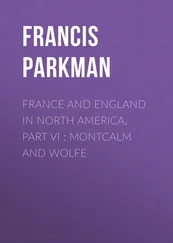Bernhard - Travels Through North America, During the Years 1825 and 1826. v. 1-2
Здесь есть возможность читать онлайн «Bernhard - Travels Through North America, During the Years 1825 and 1826. v. 1-2» — ознакомительный отрывок электронной книги совершенно бесплатно, а после прочтения отрывка купить полную версию. В некоторых случаях можно слушать аудио, скачать через торрент в формате fb2 и присутствует краткое содержание. Жанр: foreign_antique, foreign_prose, Путешествия и география, на английском языке. Описание произведения, (предисловие) а так же отзывы посетителей доступны на портале библиотеки ЛибКат.
- Название:Travels Through North America, During the Years 1825 and 1826. v. 1-2
- Автор:
- Жанр:
- Год:неизвестен
- ISBN:нет данных
- Рейтинг книги:4 / 5. Голосов: 1
-
Избранное:Добавить в избранное
- Отзывы:
-
Ваша оценка:
- 80
- 1
- 2
- 3
- 4
- 5
Travels Through North America, During the Years 1825 and 1826. v. 1-2: краткое содержание, описание и аннотация
Предлагаем к чтению аннотацию, описание, краткое содержание или предисловие (зависит от того, что написал сам автор книги «Travels Through North America, During the Years 1825 and 1826. v. 1-2»). Если вы не нашли необходимую информацию о книге — напишите в комментариях, мы постараемся отыскать её.
Travels Through North America, During the Years 1825 and 1826. v. 1-2 — читать онлайн ознакомительный отрывок
Ниже представлен текст книги, разбитый по страницам. Система сохранения места последней прочитанной страницы, позволяет с удобством читать онлайн бесплатно книгу «Travels Through North America, During the Years 1825 and 1826. v. 1-2», без необходимости каждый раз заново искать на чём Вы остановились. Поставьте закладку, и сможете в любой момент перейти на страницу, на которой закончили чтение.
Интервал:
Закладка:
The citadel, named Pendennis Castle, stands, as has been already remarked, on an eminence near the entrance of the bay, which it defends. It occupies the entire height, and is not overlooked by any other fortress. The soil consists of slate, and many of the works are cut out of the rock. It has six bastions, and on the water side, two batteries, each of about twenty pieces. A furnace for heating shot stands near the upper battery, and the lower, which lies close to the shore, is attached by its left wing to an old tower erected during the reign of Henry VIII. The fortress was built in Cromwell’s time. At the southern point stands an old tower, built of granite and surrounded by a ditch, which was erected in the reign of Henry VIII. This tower, the original fortress, serves at present as the dwelling of the commander. It may be compared with the French tours modelés . From the pinnacle, a tolerably extensive prospect of the surrounding country may be obtained. The day on which I visited the fortress with several officers from the Pallas, was very favourable, and yet a fog on the hills, descended into the vale between the fortress and the city of Falmouth, so that some time elapsed before we could see the rocky shore of the sea. These fogs are said to appear very frequently, even on the finest summer days. The fortress, which is capable of containing a garrison of two thousand men, was merely occupied by a detachment of veterans. There is an arsenal in it, where we saw nearly four thousand stands of arms for infantry and marines, besides a number of sabres, &c. all very handsomely arranged. I observed in this, as in other English fortresses, that even during peace, nearly all the cannon are suffered to remain mounted on the walls, and the fortresses are enclosed with palisades. Truly! many persons find the business of keeping the carriages in good order very profitable, and the palisades also serve instead of hedges!
The Dalcoath mines are about fourteen miles from Falmouth. The stockholders of these mines, held a meeting on the 13th of June, to settle their accounts. I rode thither with Mr. Lake, Captain Ryk, and some officers of the Pallas. But having already visited many mines, and learnt from experience that nothing is generally seen but small and low passages, that much inconvenience is experienced from dampness and filth, and my object being to visit America, I thought it by no means necessary to enter these subterraneous regions. Coals are not found in the province of Cornwall. The ore is therefore sold in heaps, at about seven pounds and a half sterling per ton, and conveyed by water to Wales, where, as is well known, stone-coal is found in abundance; it is there smelted. The Dalcoath mines occupy a large extent of ground, and have seven shafts, one of which is three hundred and forty fathoms deep. The pumps are worked by means of steam-engines, the cylinder of one of which is seventy-six inches in diameter. We were told of an engine in the neighbourhood, whose cylinder was one hundred inches in diameter. Nearly eight hundred people work daily in the Dalcoath mines, whose wages are proportioned to the product of their labour. The ridge consists of granite and schist. The metals are copper and tin. The veins of these metals lie close together, frequently cross each other, and are so rich, that in general it yields a third of its weight in pure metal. The stone is broken and washed, and the copper separated from the tin, after which the ore is collected into heaps for sale. The breaking of the stone into small pieces is performed by women, some of whom were very handsome. I remarked also, that the stone was drawn up the shaft in iron, and not in wooden buckets, as is customary in other countries. The company to which these mines belong is said to realize great sums; however a deficit occasionally occurs. This was the case at the present settlement of accounts, and for this reason the gentlemen, about twenty in number, with a permanent director, Mr. Rennel at their head, were not in the best humour. At the dinner, which naturally closed the transaction, many local concerns, which did not particularly interest us, were discussed. Many toasts, which all referred to localities, were drank. At last, it occurred to the gentlemen to drink the health of the king of the Netherlands, which I returned by drinking the health of the royal family of England. The dinner consisted, according to the English fashion, of very solid food – roast-beef, plumb-pudding, &c.
Our course led us through Penryn, a small place, about two miles from Falmouth, containing about three thousand inhabitants, and but poorly built. It has a harbour, and lies at one extremity of Falmouth Bay. Coal ships from Wales, and vessels with grain from Ireland, principally visit this port. Cornwall is too hilly to allow the necessary grain to be raised, and the mines occupy so much space, and withdraw so many poor people from farming, that by far the largest portion of grain must be brought from other quarters. The road, which, though hilly, was in a good state, led through many pastures which were enclosed with hedges.
The few trees which are seen, have not attained a great height. In the new plantations I observed some larches. The houses are built of stone, many of granite, here very common and cheap, and roofed with slate. Many new houses are erected on speculation, because the population rapidly increases. We also passed through Redruth, a hilly and angular town, of about three thousand inhabitants, who are principally miners. The town is surrounded by mines, whose general aspect is by no means pleasing. On an eminence not far from Redruth, we saw some ruins which are said to be the remains of a Druid temple. In the mines I observed a superstitious practice, which I find to prevail also in ships and farm houses; a horse-shoe is nailed over the door to keep off witches. When at Dalcoath, we found ourselves only a mile and a half distant from Bristol Channel, and saw St. Agnes’ Beacon, a high mountain in the neighbourhood. We at last arrived at Tehidy Park, belonging to Lord Dunstanville; this is principally a new settlement, which appears to great advantage in a region like this, which is not rich. We stopped at the dwelling house to view it. It is a tolerably large, square building with four porches, and contains several paintings by Van Dyk, Lely, Kneller, Hudson, and Sir Joshua Reynolds; however, I doubt whether the former be genuine. I was particularly pleased with a very good portrait of the celebrated Fox. We saw also several statues, copies of the best antiques and cameos of verd and jaune antique .
I had frequently seen sketches of St. Michael’s Mount in Cornwall, and had long wished to see the mount itself. I accordingly took advantage of my present leisure to visit it. The mount lies in Mountbay, opposite Marazion, twenty-three miles distant from Falmouth. I left this place June 14th, at noon, the weather being very warm. The road leads through Penryn, and then inclines to the left towards the ridges, constantly up and down hill, through heaths, where few traces of culture were observed; the houses stand detached, and have a miserable appearance. On the heights, however, we had occasionally a prospect towards the western ridges of Cornwall. Trees are few in number; we observed mines here and there. Thirteen miles from Falmouth lies Helstone, a little mining town of two thousand five hundred inhabitants, containing some neat houses, but miserable pavements. The court-house stands in the middle of the town, under which is the market. On the other side of Helstone we came to a beautiful valley, where we saw trees again, and by means of a stone bridge we passed over Looe, a small stream, which at a short distance empties into the sea. As far as Marazion the region is agreeable; hilly indeed, but better cultivated. We approached the sea on the left; on the right we had the ridges, among which we discovered some neat farms. As we approached Marazion, which lies on a descent towards the sea, we enjoyed the really fine view of Mountbay and of St. Michael’s Mount. In Marazion we stopped at the Star Inn, and immediately took a boat to reach the mountain, which is a short distance from the shore. The rock, which at low water joins the shore, consists of granite, is a mile in circumference at its base, and is two hundred and fifty feet high. At its foot there is a small fishing village of about thirty houses, with a harbour formed by two new piers. By means of very inconvenient steps which are cut out of the rock, we reached an old castle, standing at the highest point, and belonging to the family St. Aubyn. This is the same family, whose chief, Sir John St. Aubyn, owns almost all the houses in Devonport, and a large portion of the ground of the dock-yard. In former times, St. Michael’s Mount was a cloister. Adapted by its isolated situation for a fortress, art has contributed but little to its strength, and added merely a pair of bastions, and platforms, on which a few small cannon belonging to the owner of the mount, are at present standing. It sustained several sieges in former times. We were conducted to a Gothic chapel with ancient, painted window-glasses, after which we examined the castle. In this, however, we found nothing remarkable, except the old refectory of the cloister, called the chevy-chace-room , with strange bas-reliefs, representing ancient hunting scenes. In this hall are very old pieces of furniture; one chair is said to be three hundred, another five hundred years old.
Читать дальшеИнтервал:
Закладка:
Похожие книги на «Travels Through North America, During the Years 1825 and 1826. v. 1-2»
Представляем Вашему вниманию похожие книги на «Travels Through North America, During the Years 1825 and 1826. v. 1-2» списком для выбора. Мы отобрали схожую по названию и смыслу литературу в надежде предоставить читателям больше вариантов отыскать новые, интересные, ещё непрочитанные произведения.
Обсуждение, отзывы о книге «Travels Through North America, During the Years 1825 and 1826. v. 1-2» и просто собственные мнения читателей. Оставьте ваши комментарии, напишите, что Вы думаете о произведении, его смысле или главных героях. Укажите что конкретно понравилось, а что нет, и почему Вы так считаете.












